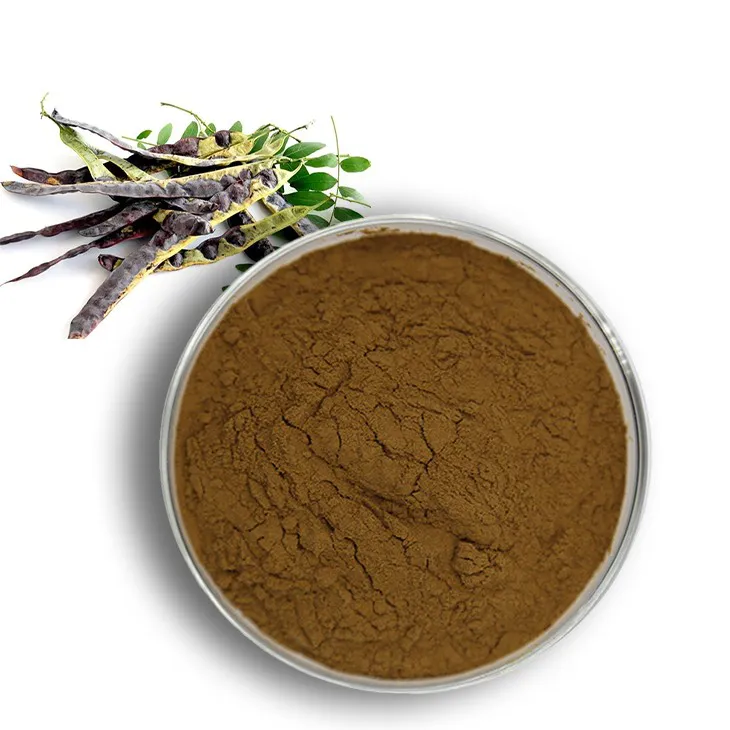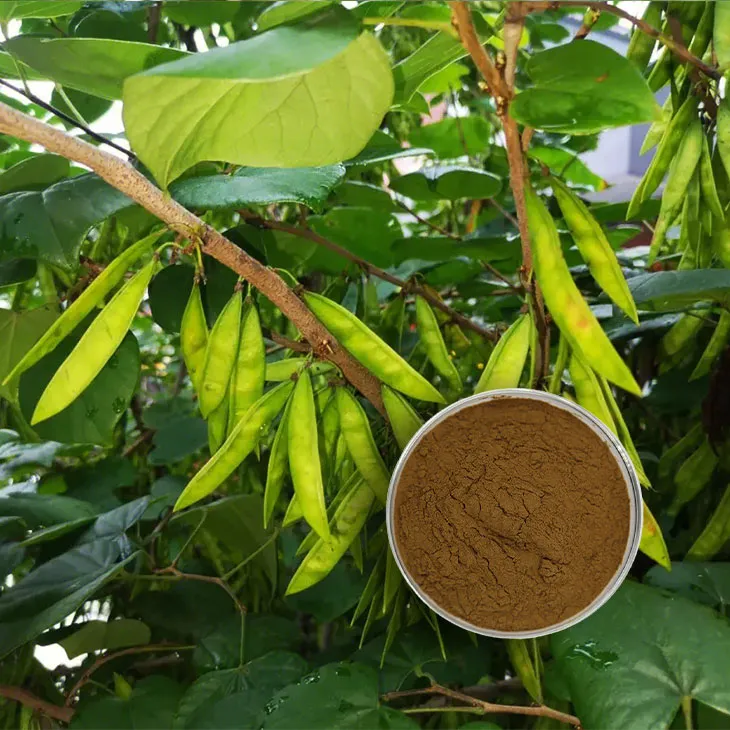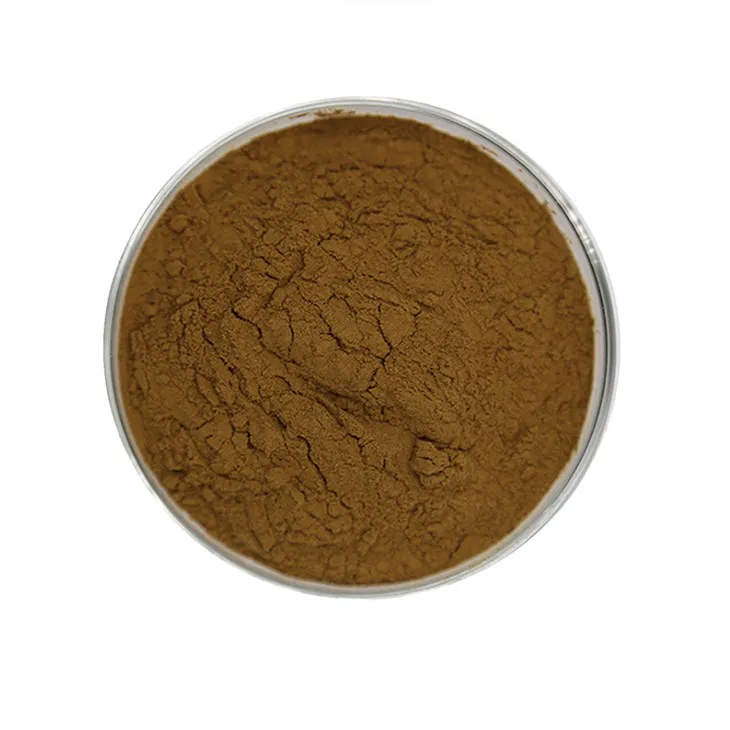- 0086-571-85302990
- sales@greenskybio.com
Optimal Bioavailability of Saponin Extracts
2024-11-27

1. Introduction
Saponin Extracts have gained significant attention in various fields such as medicine, nutrition, and cosmetics due to their diverse biological activities. However, achieving the best bioavailability of these extracts remains a challenge. Bioavailability refers to the proportion of a substance that enters the systemic circulation and is able to have an active effect. In the case of Saponin Extracts, it is influenced by multiple factors related to their chemical structure, the delivery systems used, and the body's biological environment. Understanding these factors is essential for unlocking the full potential of Saponin Extracts in different applications.

2. Chemical Nature of Saponins
2.1 Structure and Classification
Saponins are a class of glycosides that consist of a sapogenin aglycone (a steroid or triterpene) and one or more sugar moieties. Based on the nature of the sapogenin, they can be classified into two main groups: steroid saponins and triterpenoid saponins. The structure of saponins plays a crucial role in their bioavailability. For example, the hydrophobic nature of the sapogenin part and the hydrophilic nature of the sugar moieties can affect their solubility and absorption in the body.2.2 Chemical Modifications
Chemical modifications of saponins can be explored to enhance their bioavailability. One approach is to modify the sugar chains attached to the sapogenin. This can potentially change the solubility and interaction with biological membranes. For instance, esterification or methylation of the sugar groups may alter the polarity of the saponin molecule, making it more or less likely to cross cell membranes. Another aspect is the modification of the sapogenin itself. However, these modifications need to be carefully designed to avoid losing the biological activity associated with the original saponin structure.
3. Delivery Systems for Saponin Extracts
3.1 Nanoparticle - Based Delivery
Nanoparticle - based delivery systems have shown great promise in improving the bioavailability of saponin extracts. Nanoparticles can protect saponins from degradation in the gastrointestinal tract or other biological environments. They can also enhance cellular uptake due to their small size. For example, polymeric nanoparticles can be designed to encapsulate saponin extracts. These nanoparticles can be modified with specific ligands on their surface to target certain cells or tissues in the body. This targeted delivery can increase the concentration of saponin extracts at the desired site, thereby enhancing their bioactivity.3.2 Lipid - Based Delivery
Lipid - based delivery systems are also effective for saponin extracts. Liposomes, which are spherical vesicles composed of lipid bilayers, can encapsulate saponins. The lipid composition of liposomes can be adjusted to match the lipophilicity of saponins, facilitating their incorporation into the lipid bilayer. This can improve the solubility of saponins in lipid - rich environments such as cell membranes. Additionally, lipid - based systems can enhance the absorption of saponins through the lymphatic system, bypassing the first - pass metabolism in the liver, which can increase their bioavailability in the systemic circulation.3.3 Microemulsion - Based Delivery
Microemulsions are thermodynamically stable, isotropic mixtures of oil, water, and surfactant. They can be used as delivery systems for saponin extracts. Microemulsions can increase the solubility of saponins by forming a stable dispersion. The small droplet size of microemulsions allows for efficient transport across biological membranes. They can also protect saponins from enzymatic degradation. For example, a microemulsion formulation can be designed with an appropriate ratio of oil, water, and surfactant to optimize the delivery of saponin extracts.
4. Interactions with the Body's Biological Environment
4.1 Gastrointestinal Absorption
The gastrointestinal (GI) tract is the first site of contact for orally administered saponin extracts. The absorption of saponins in the GI tract is a complex process. Saponins may interact with bile salts, which are important for lipid digestion and absorption. These interactions can affect the solubility and micellar formation of saponins, influencing their absorption. Moreover, the integrity of the intestinal barrier can also impact saponin absorption. If the intestinal barrier is damaged, it may lead to increased paracellular absorption of saponins, which may have different implications compared to the normal transcellular absorption route.4.2 Metabolism in the Body
Once absorbed, saponins are subject to metabolism in the body. They can be metabolized by enzymes in the liver and other tissues. Metabolism can lead to the formation of metabolites that may have different bioactivities compared to the parent saponin. For example, some saponins may be glucuronidated or sulfated, which can affect their solubility, distribution, and excretion. Understanding the metabolic pathways of saponins is crucial for predicting their bioavailability and biological effects.4.3 Interaction with Gut Microbiota
The gut microbiota can also play a role in the bioavailability of saponin extracts. Gut bacteria can metabolize saponins, potentially converting them into more bioactive or more easily absorbable forms. Some saponins may act as prebiotics, influencing the composition and activity of the gut microbiota. In turn, the gut microbiota can modify the chemical structure of saponins, affecting their absorption and bioactivity. This complex interaction between saponins and gut microbiota is an area of active research.
5. Strategies for Optimizing Bioavailability
5.1 Formulation Optimization
Optimizing the formulation of saponin extracts is a key strategy. This includes selecting the appropriate delivery system based on the properties of the saponins and the intended route of administration. For example, if the saponin extract is hydrophobic, a lipid - based delivery system may be more suitable. In addition, adjusting the composition of the delivery system, such as the ratio of components in a microemulsion or the type of polymer in a nanoparticle, can enhance the bioavailability.5.2 Co - Administration with Other Substances
Co - administration of saponin extracts with other substances can also improve bioavailability. For example, combining saponins with substances that enhance intestinal permeability, such as certain peptides or polysaccharides, can increase their absorption. Additionally, co - administration with substances that inhibit saponin - metabolizing enzymes may reduce the degradation of saponins in the body, leading to higher bioavailability.5.3 Patient - Specific Approaches
Considering patient - specific factors is important for optimizing bioavailability. Different individuals may have different genetic backgrounds, gut microbiota compositions, and physiological states. For example, patients with certain genetic polymorphisms may metabolize saponins differently. Tailoring the delivery and administration of saponin extracts based on these patient - specific factors can ensure maximum bioavailability.6. Conclusion
Optimizing the bioavailability of saponin extracts is a complex but essential task. Understanding the chemical nature of saponins, utilizing appropriate delivery systems, and considering the interactions with the body's biological environment are all crucial aspects. By implementing strategies such as formulation optimization, co - administration with other substances, and patient - specific approaches, we can enhance the bioavailability of saponin extracts. This will enable us to fully exploit the potential of these valuable extracts in various applications, from medicine to nutrition and cosmetics.
FAQ:
What are saponins?
Saponins are a class of chemical compounds found in various plants. They are glycosides with a triterpene or steroid aglycone. Saponins are known for their surfactant - like properties, which means they can lower the surface tension of a liquid. They have diverse biological activities and are often of interest in fields such as medicine, food, and cosmetics.
Why is the bioavailability of saponin extracts important?
The bioavailability of saponin extracts is crucial because it determines the amount of the active saponin components that can reach the target site in the body and exert their intended biological effects. If the bioavailability is low, the potential benefits of saponins, such as antioxidant, anti - inflammatory, or immunomodulatory effects, may not be fully realized.
How does the chemical nature of saponins affect their bioavailability?
The chemical structure of saponins, including their glycosylation patterns, molecular size, and hydrophobicity, can influence their bioavailability. For example, saponins with more complex glycosylation may have difficulty crossing biological membranes, reducing their absorption. On the other hand, the hydrophobic nature of some saponins can affect their solubility in aqueous environments, which is also important for absorption.
What are some common delivery systems for enhancing saponin bioavailability?
Nanoparticle - based delivery systems are often used to enhance saponin bioavailability. These nanoparticles can protect saponins from degradation in the gastrointestinal tract and improve their solubility. Liposomes are another option; they can encapsulate saponins and facilitate their delivery across cell membranes. Additionally, polymeric micelles can be designed to specifically target saponin delivery to certain tissues or cells.
How do saponins interact with the body's biological environment?
Saponins interact with the body's biological environment in multiple ways. In the gastrointestinal tract, they may interact with digestive enzymes and bile salts. Once absorbed, they can interact with cell membranes due to their surfactant - like properties. Saponins may also interact with receptors in cells, which can trigger various intracellular signaling pathways and biological responses.
Related literature
- Enhancing Bioavailability of Saponins: Current Strategies and Future Perspectives"
- "Saponin Bioavailability: Influence of Chemical Structure and Delivery Approaches"
- "The Role of Saponins in Health and Their Bioavailability Challenges"
- ▶ Hesperidin
- ▶ citrus bioflavonoids
- ▶ plant extract
- ▶ lycopene
- ▶ Diosmin
- ▶ Grape seed extract
- ▶ Sea buckthorn Juice Powder
- ▶ Beetroot powder
- ▶ Hops Extract
- ▶ Artichoke Extract
- ▶ Reishi mushroom extract
- ▶ Astaxanthin
- ▶ Green Tea Extract
- ▶ Curcumin Extract
- ▶ Horse Chestnut Extract
- ▶ Other Problems
- ▶ Boswellia Serrata Extract
- ▶ Resveratrol Extract
- ▶ Marigold Extract
- ▶ Grape Leaf Extract
- ▶ blog3
- ▶ blog4
-
Chinese melatonin factories.
2024-11-27
-
Certified organic kidney bean extract.
2024-11-27
-
Acerola Juice Powder
2024-11-27
-
Chasteberry Extract
2024-11-27
-
Sophora Flavescens Root Extract
2024-11-27
-
White mustard seed extract
2024-11-27
-
melatonin extract
2024-11-27
-
Ivy Extract
2024-11-27
-
Polygonum Cuspidatum Extract
2024-11-27
-
Cactus Extract
2024-11-27
-
Artichoke Extract
2024-11-27
-
Curcumin
2024-11-27





















